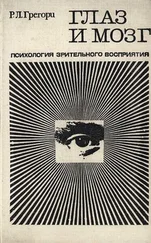Fore, W. F. (1987). Television and religion: The shaping of faith, values, and culture. Minneapolis, MN: Augsburg Publishing House.
Freedman, D. H. (1988, February). Why you watch commercials – whether you mean to or not.7VGu/ etc, 4–7
Freedman, J. L. (1984). Effects of television violence on aggressiveness. Psychological Bulletin, 96, 227–246
Freedman, J. L. (1988). Television violence and aggression: What the evidence shows. In: S. Oskamp (Ed.). Television as a social issue (p. 144–162). Newbury Park, CA: Sage
Freimuth, V. S., Hammond, S. L., Edgar, T, Monahan, J. L. (1990). Reaching those at risk: A content-analytic study of AIDS PSAs. Communication Research, 17, 775–791.
Friedrich-Cofer, L., Huston, A. C. (1986). Television violence and aggression: The debate continues. Psychological Bulletin, 100, 364–371.
A friend in need. (1998, May). World Press Review, p. 32.
Fuchs, D. A. (1966). Election-day radio-television and Western voting. Public Opinion Quarterly, 30, 226–236.
Funabiki, J. (1992). "Asian invasion" cliches recall wartime propaganda. Extra!, 5(5), 13–14.
Funk, J. (1993 a). Reevaluating the impact of video games. Clinical Pediatrics. 32, 86–90.
Funk, J. (1993 b). Video games. Adolescent Medicine: Stale of the Art Reviews, 4, 589–598.
Gamson, J. (1995, Fail). Do ask, do tell: Freak talk on TV. The American Prospect.
Ganley. G. D. (1992). The exploding political power of personal media. Norwood, NJ: Ablex.
Gardner, D. M., Leonard, N. H. (1990). Research in deceptive and corrective advertising: Progress to date and impact on public policy. Current Issues and Research in Advertising, 12, 275–309.
Gardner, M. P, Houston, M. J. (1986). The effects of verbal and visual components of retail communications. Journal of Retailing, 62, 64–78.
Garelik, G. (1985, April). The weather peddlers. Discover. 18–29.
Garramone, G. M. (1984). Voter responses to negative political ads. Journalism Quarterly, 61(2), 250–259.
Garramone, G. M. (1985). Effects of negative political advertising: The role of sponsor and rebuttal. Journal of Broadcasting and Electronic Media, 29(2), 147–159.
Garramone, G. M., Atkin, C. K., Pinkleton, B. E., Cole, R. T. (1990). Effects of negative political advertising on the political process. Journal of Broadcasting and Electronic Media, 34, 299–311.
Garramone. G. M., Stcele, M. E., Pinkleton, B. (1991). The role of cognitive schemata in determining candidate characteristic effects. In: F. Biocca (Ed.). Television and political advertising. Vol I: Psychological processes (p. 311–328). Hillsdale, NJ: Lawrence Eribaum Associates.
Gartner, M. (1991, July/August). Naming the victim. Columbia Journalism Review, 29.
Geen, R. G. (1994). Television and aggression: Recent developments in research and theory. In: D. Zillmann, J. Bryant, A. C. Huston (Eds.). Media, children, and the family: Social scientific, psychodynamic, and clinical perspectives (p. 151–162). Hillsdale NJ: Lawrence Eribaum Associates.
Geen, R. G., Quanty, M. B. (1977). The catharsis of aggression: An evaluation of a hypothesis. In: L. Berkowitz (Ed.), Advances in experimental social psychology (Vol. 10, p. 1–37). New York: Academic Press.
Geiger, S., Reeves, B. (1993 a). The effects of scene changes and semantic relatcdness on attention to television. Communication Research, 20, 155–175.
Geiger, S., Reeves, B. (1993 b). We interrupt this program... Attention for television sequences. Human Communication Research, 19, 368–387.
Geiger, S. R, Reeves. B. (1991). The effects of visual structure and content emphasis on the evaluation and memory for political candidates. In: F. Biocca (Ed.). Television and political advertising: Vol. I. Psychological processes (p. 125–143). Hillsdale, NJ: Lawrence Eribaum Associates.
Geiogamah, H., Pavel, D. M. (1993). Developing television for American Indian and Alaska native children in the late 20th century. In: G. L. Berry J. K. Asamen (Eds.). Children television (p. 191–204). Newbury Park. CA: Sage.
Geis, R. Brown, V. Jennings. J., Porter, N. (1984). TV commercials as achievement scripts for women. Sex Roles, 10(7/8), 513–525.
Geis, M. L. (1982). The language of television advertising. New York: Academic Press.
Gelb, B, D., Zinkhan, G. M. (1985). The effect of repetition on humor in a radio advertising study. Journal of advertising, 14(4), 13–20.
Gerbner, G. (1997). Gender and age in prime time television. In: S. Kirschner D. A. Kirschner (Eds.). Perspectives on psychology and the media (p. 69–94). Washington, DC: American Psychological Association.
Gerbner, G., Gross, L. (1980). The violent face of television and its lessons. In: E. Palmer A. Dorr (Eds.). Children and the faces of television: Teaching, violence, selling (p. 149–162). New York: Academic Press.
Gerbner, G., Gross, L., Morgan, M., Signorielli, N. (1980). The mainstreaming of America: Violence profile No. 11. Journal of Communication, 30(3), 10–29.
Gerbner, G., Gross, L., Morgan, M., Signorielli, N. (1981 a). Health and medicine on television. New England Journal of Medicine. 305(15), 901–904.
Gerbner, G., Gross, L., Morgan, M., Signorielli, N. (1981 b). Scientists on the TV screen. Society, 18(4), 41–44.
Gerbner, G., Gross, L., Morgan, M., Signorielli, N. (1982). Charting the mainstream: Television's contributions to political orientations. Journal of Communication, 32(2), 100–127.
Gerbner, G., Gross, L., Morgan, M., Signorielli, N. (1984). Political correlates of television viewing. Public Opinion Quarterly, 48, 283–300.
Gerbner, G., Gross, L., Morgan, M., Signorielli, N. (1986). Living with television: The dynamics of the cultivation process. In: J. Bryant D. Zillmann (Eds.). Perspectives on media effects (p. 17–40). Hillsdale, NJ: Lawrence Eribaum Associates.
Gerbner, G., Gross, L., Morgan, M., Signorielli. N. (1994). Growing up with television: The cultivation perspective. In: J. Bryant D. Zillmann (Eds.). Media effects: Advances in theory and research (p. 17–41). Hillsdale, NJ: Lawrence Eribaum Associates.
Gerbner, G., Gross, L., Signorielli, N., Morgan, M. (1980). Aging with television: Images on television drama and conception of social reality. Journal of Communication, 30(1), 37–47.
Gerbner, G., Gross, L., Signorielli. N., Morgan, M. (1986). Television's mean world: Violence profile No. 14–15. Philadelphia: Annenberg School of Communication, University of Pennsylvania.
Gerbner, G., Signorielli, N. (1979). Women and minorities in television drama (1969–1978). Philadelphia: Annenberg School of Communication, University of Pennsylvania.
Getino, O. (1990). Impacto del video en el espacio Latinoamericano [Impact of video in Latin America]. Lima, Peru: Institute Para America Latina.
Gibbs, N. (1996, May 20). The screen test. Time, 31–32.
Gibson, R., Zillmann, D. (1994). Exaggerated versus representative exemplification in news reports: Perception of issues and personal consequences. Communication Research, 21, 603–624.
Gilly, M. C. (1988). Sex roles in advertising: A comparison of television advertisements in Australia, Mexico, and the United States. Journal of Marketing, 52, 75–85. Gleick, E. (1996, October 21). Read all about it. Time, 66–69.
Goldberg, M. (1988, February 20). Take two doses for Kildare and Casey and don't call me in the morning. TV Guide, 12–13.
Goldberg, M. E. (1995). Social marketing: Are we fiddling while Rome burns' Journal of Consumer Psychology, 4, 347–370.
Goldstein, J. H. (Ed.). (1986). Reporting science: The case of aggression. Hillsdale. NJ: Lawrence Eribaum Associates.
Goldstein. J. H., Arms, R. L. (1971). Effects of observing athletic contests on hostility. Sociometry, 34, 83–90.
Читать дальше












